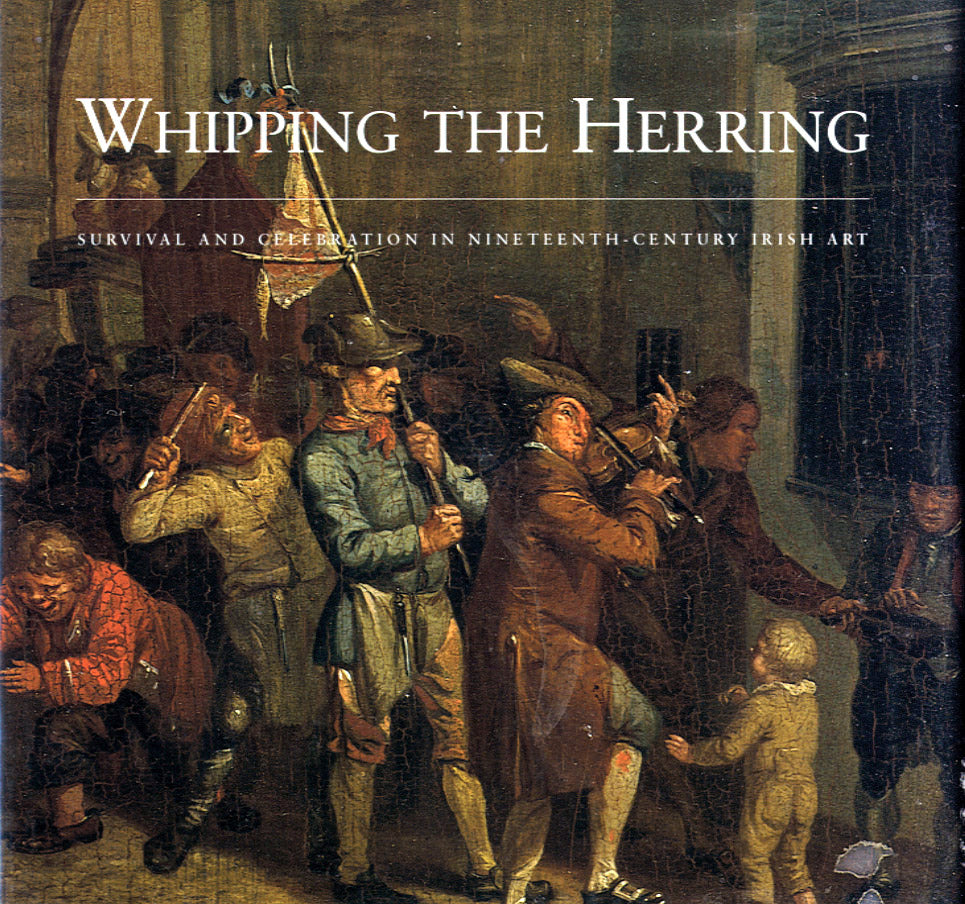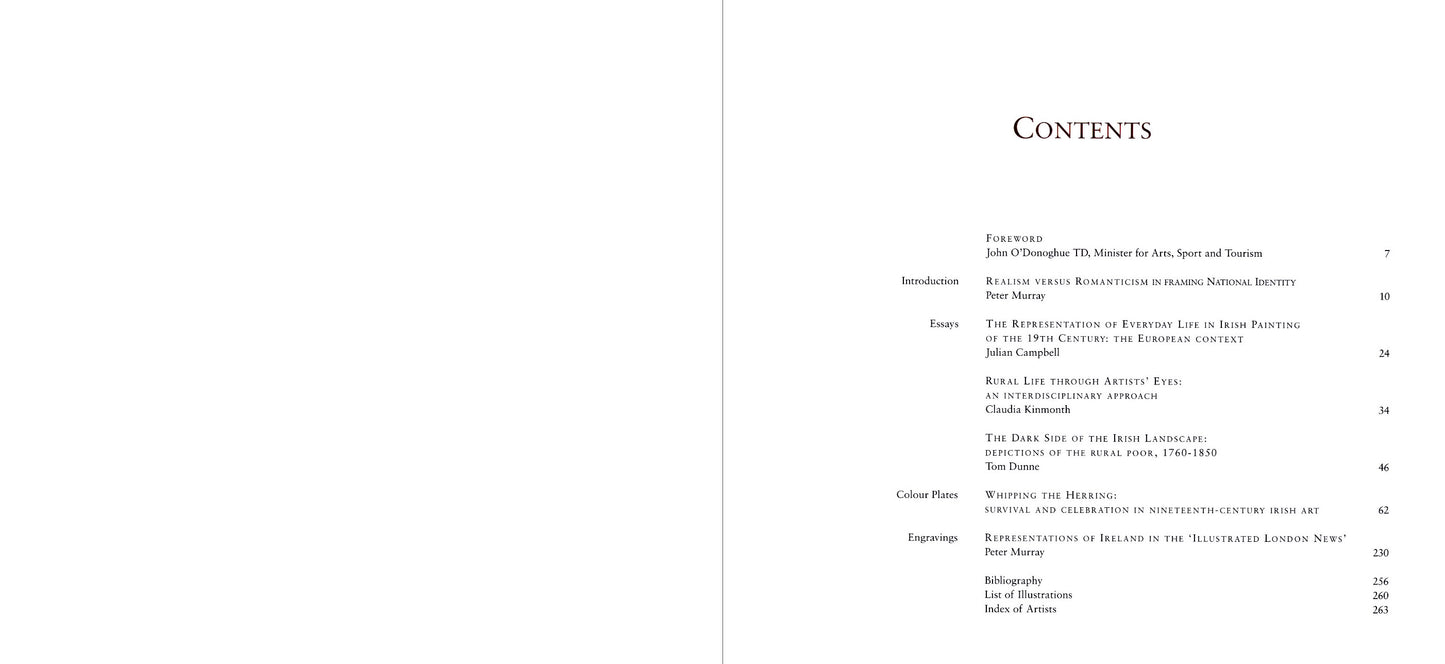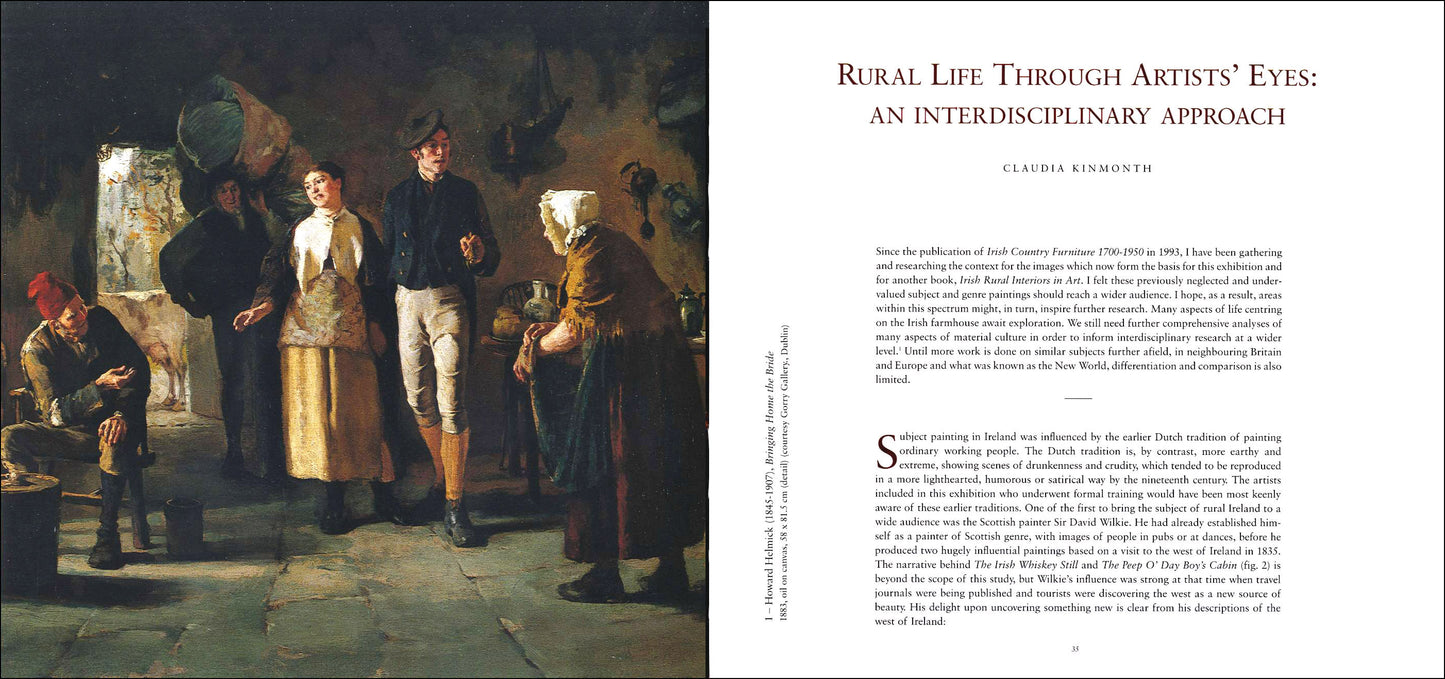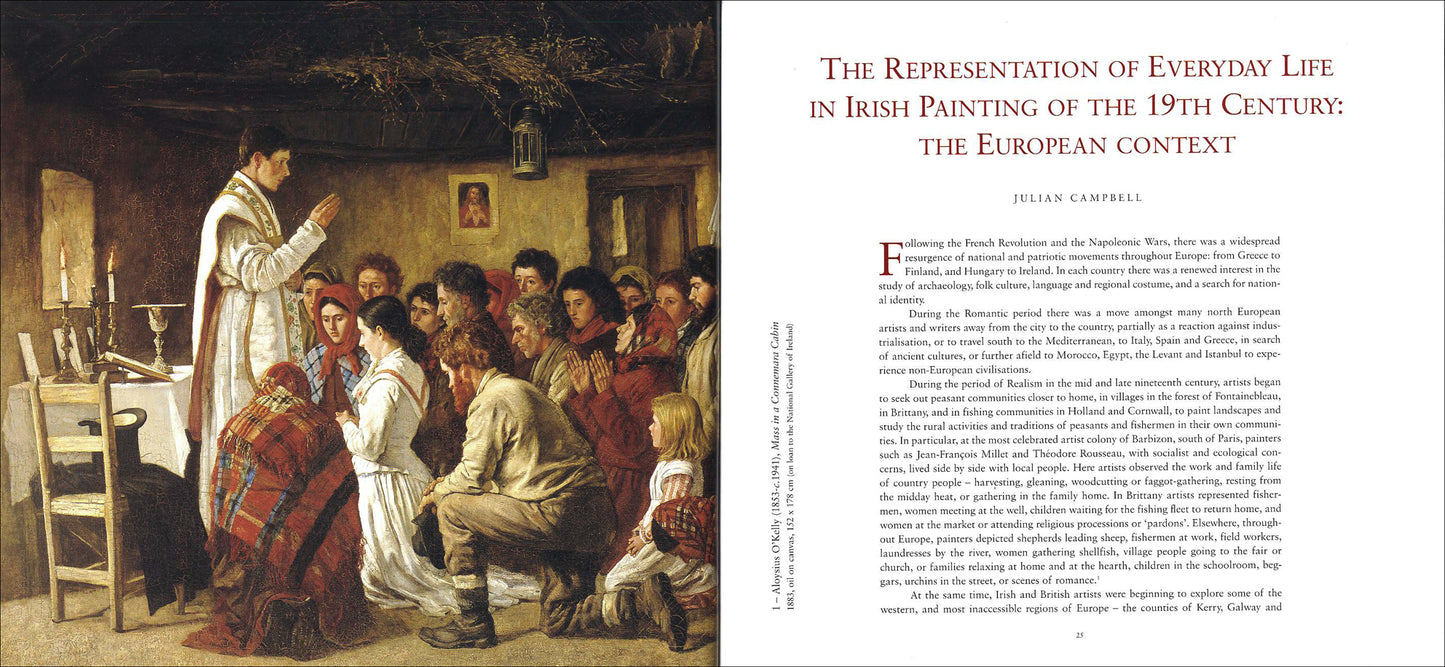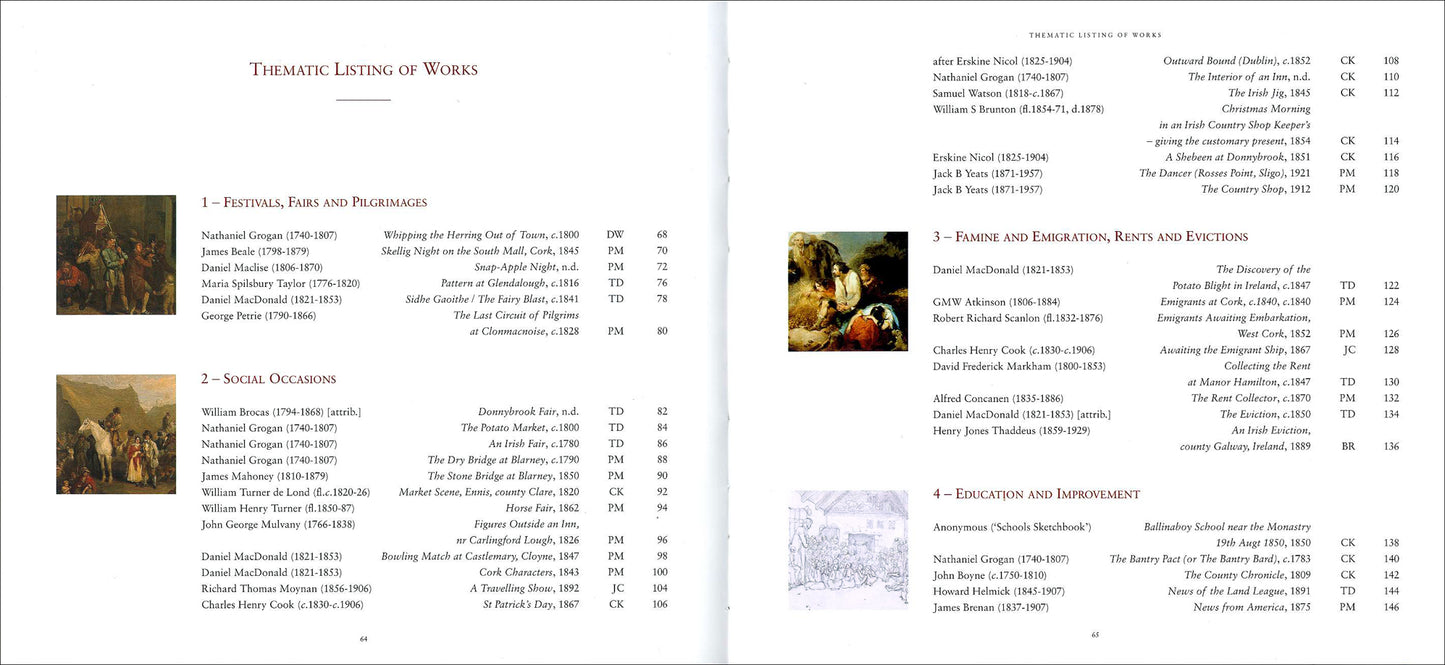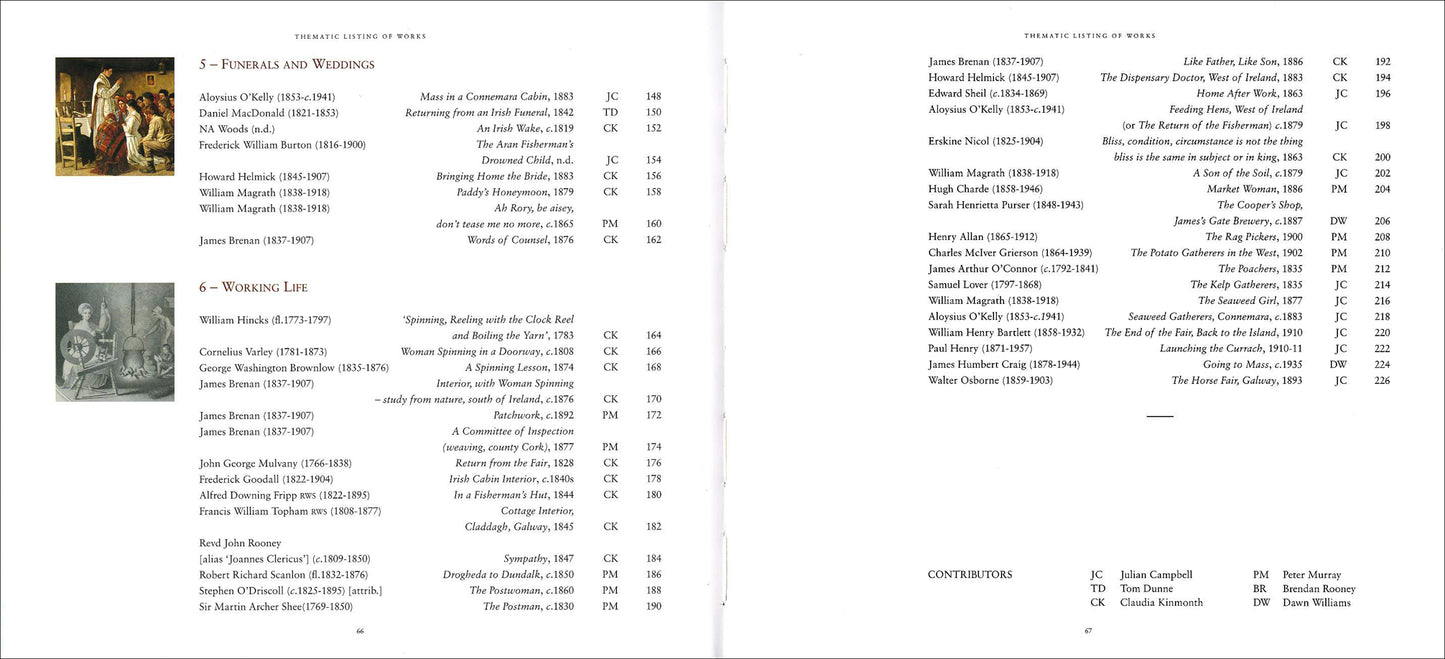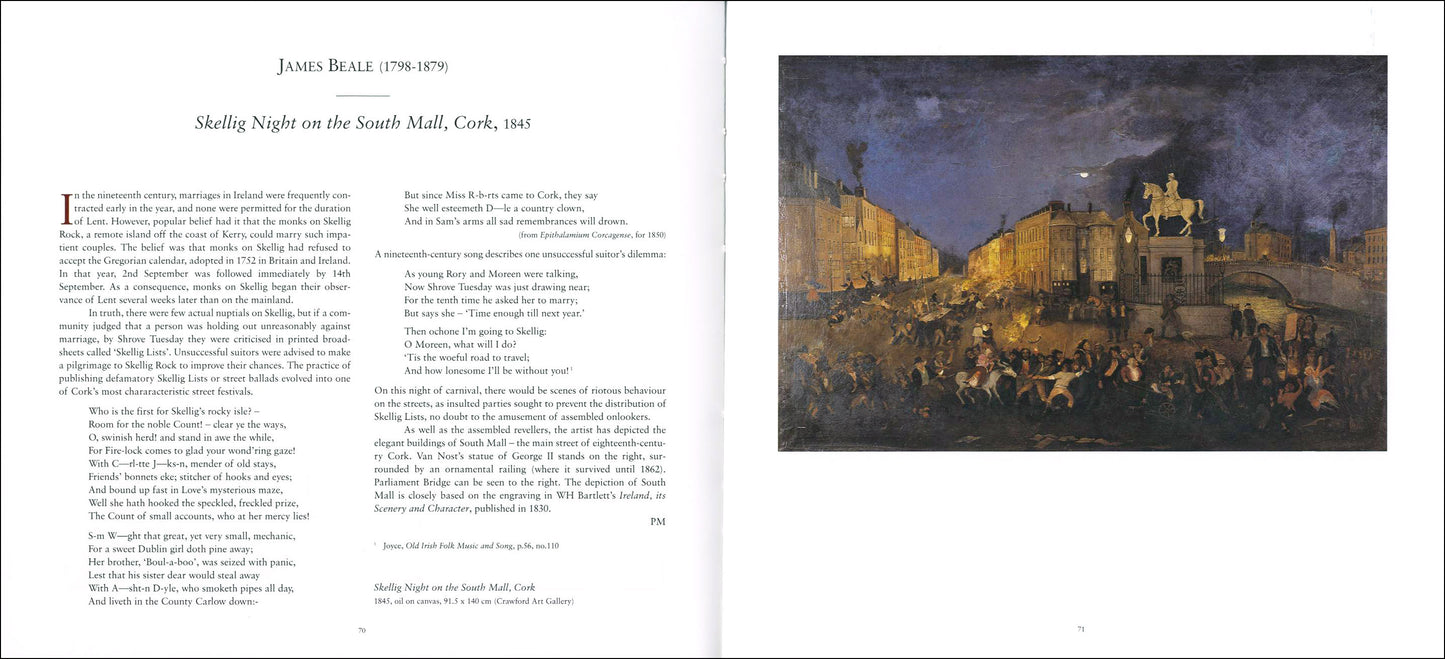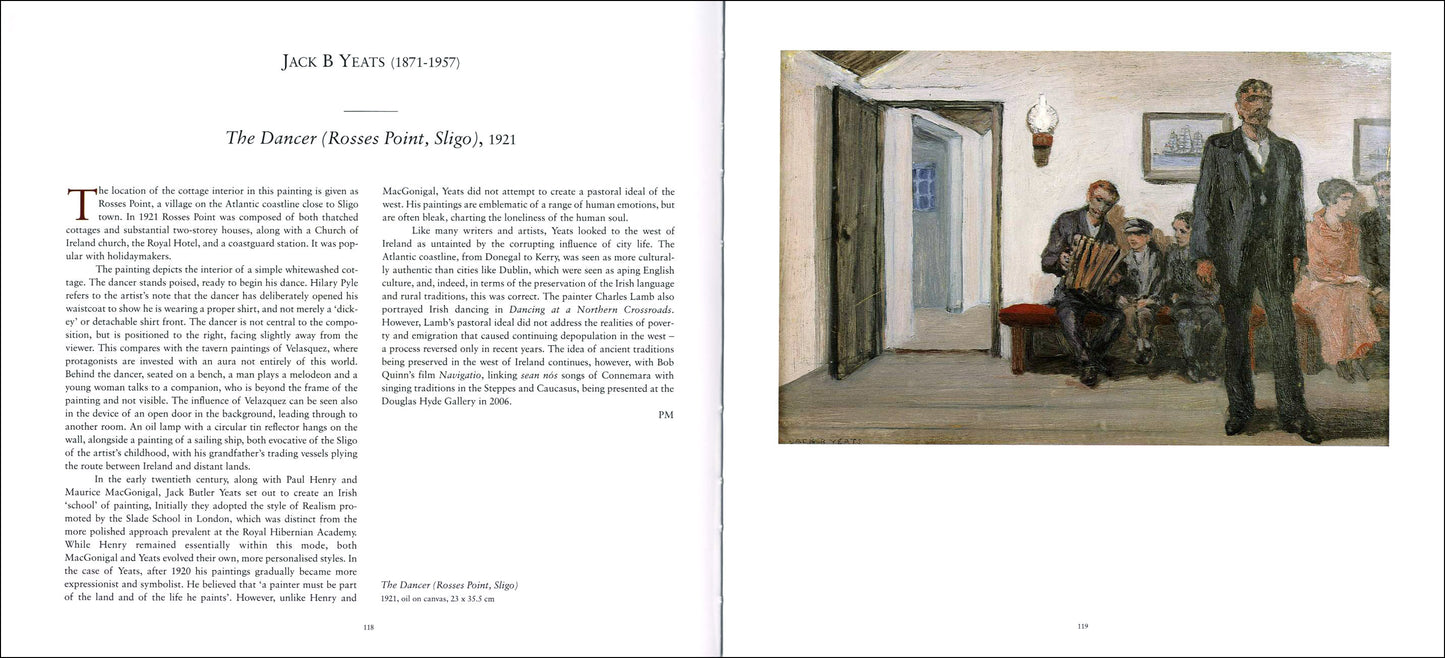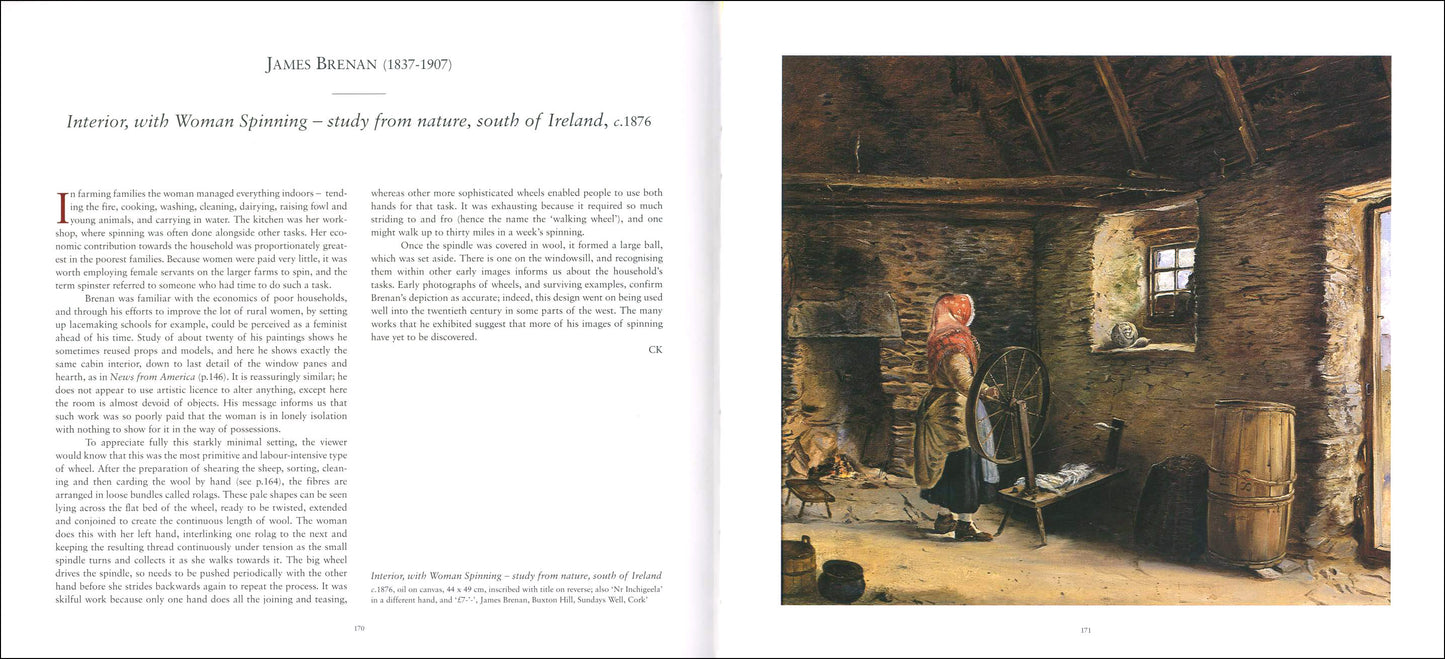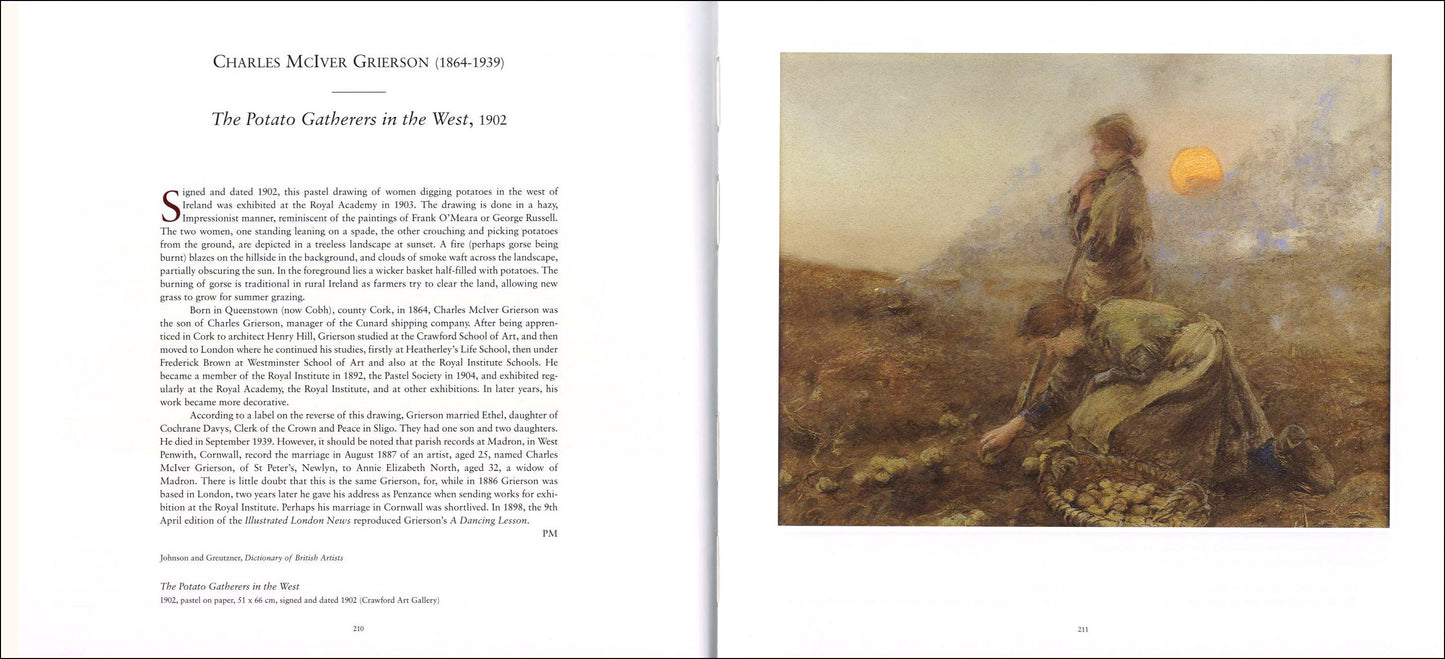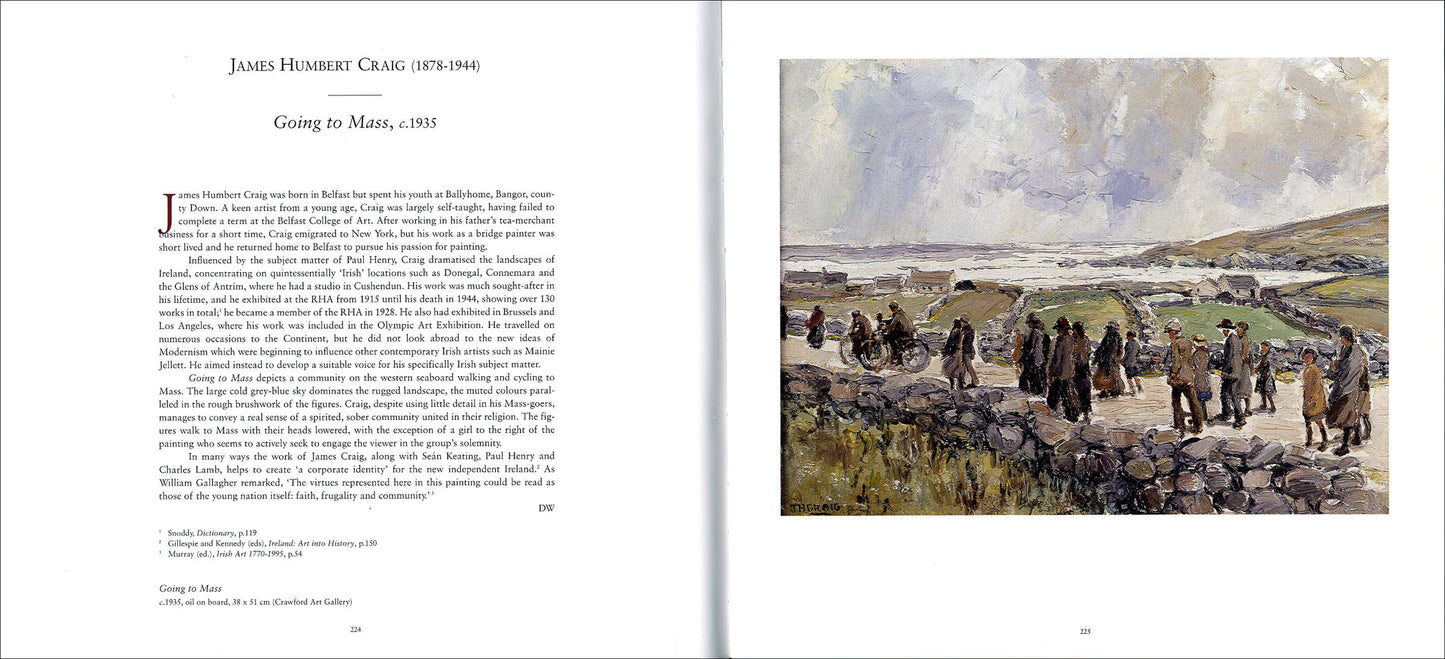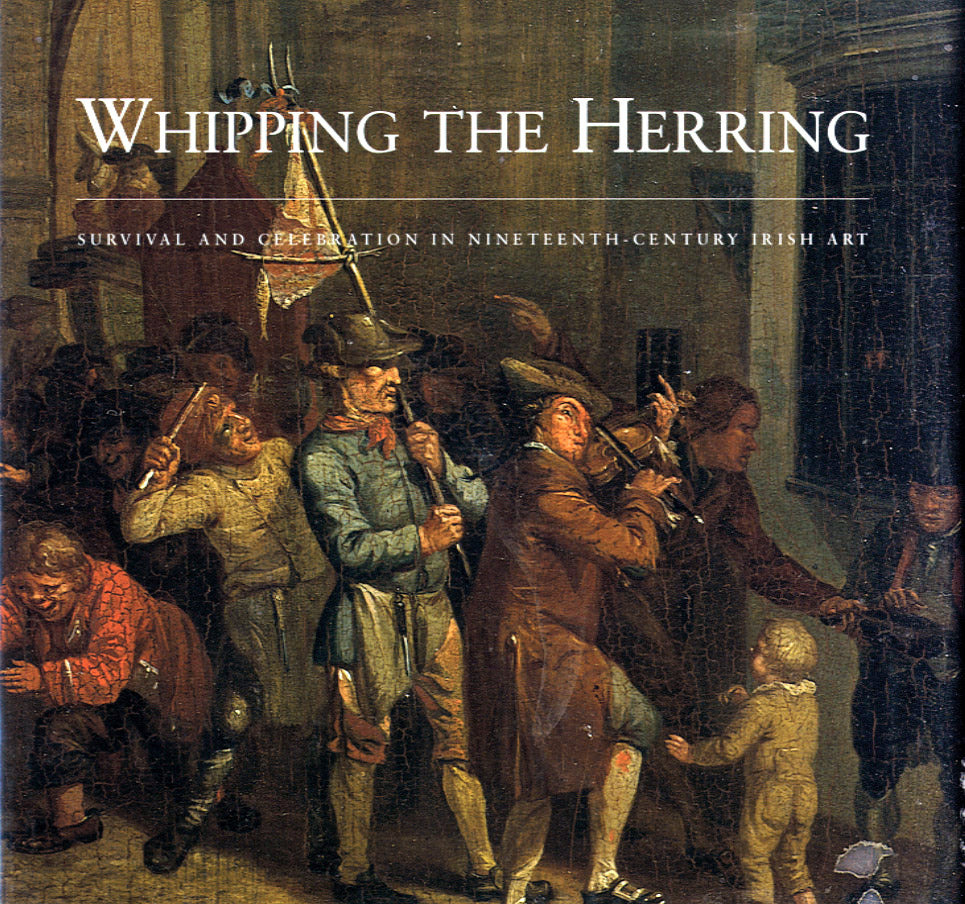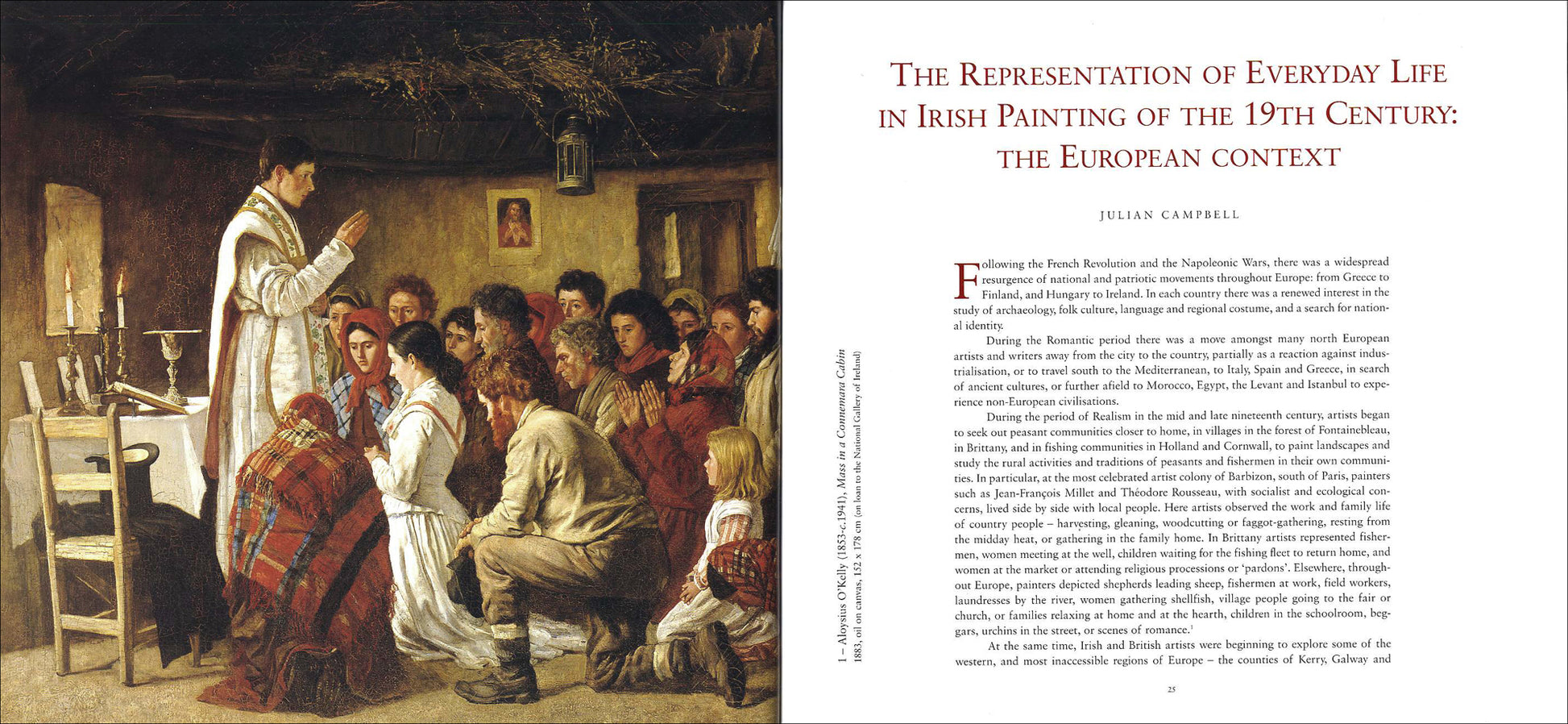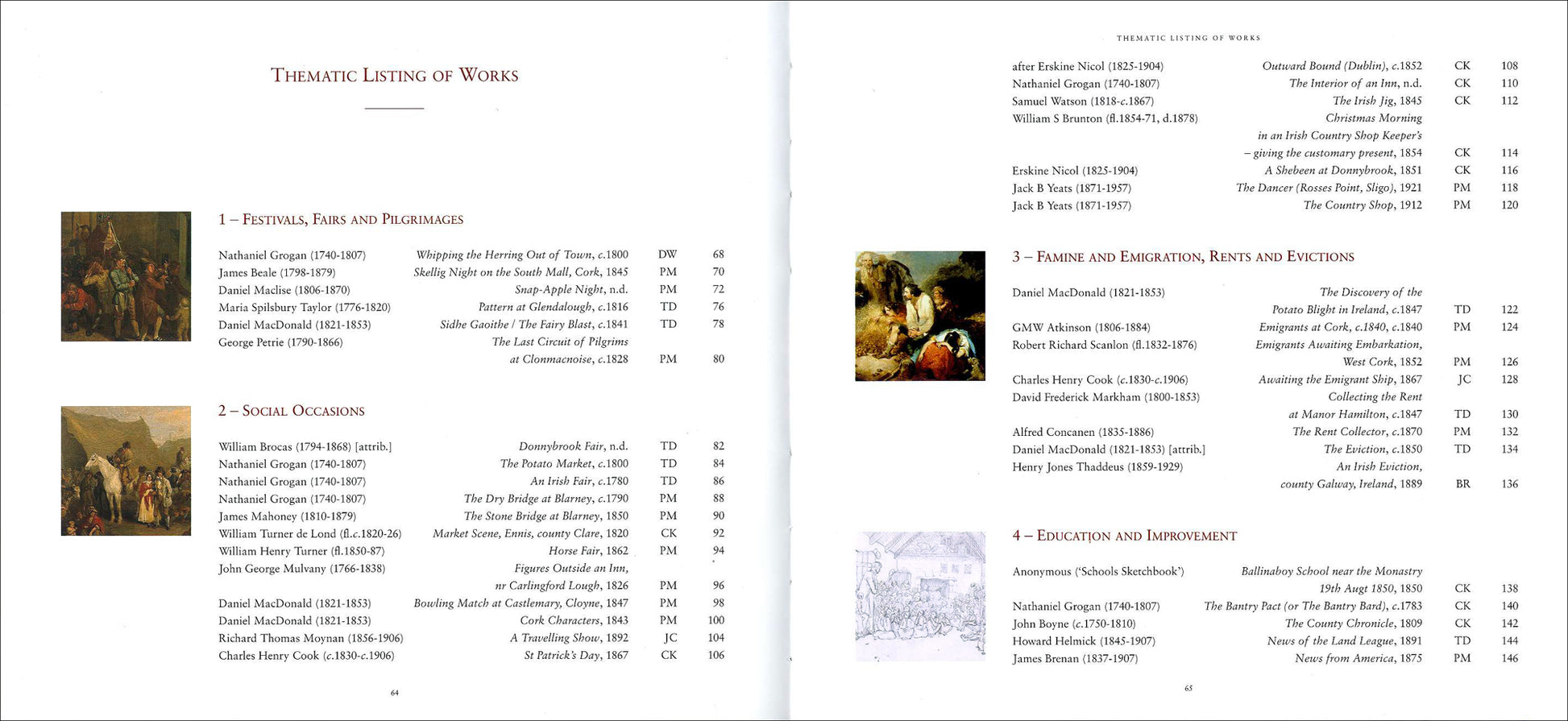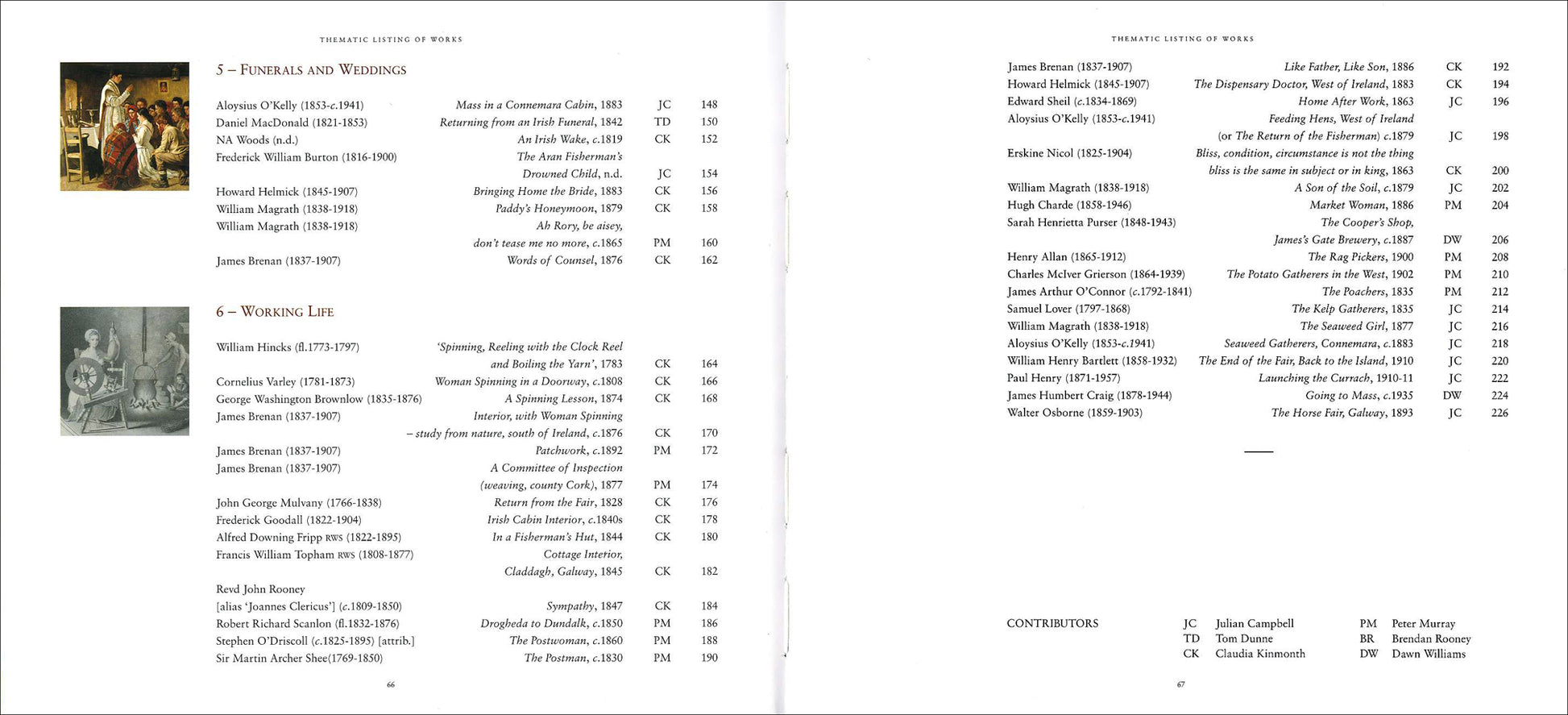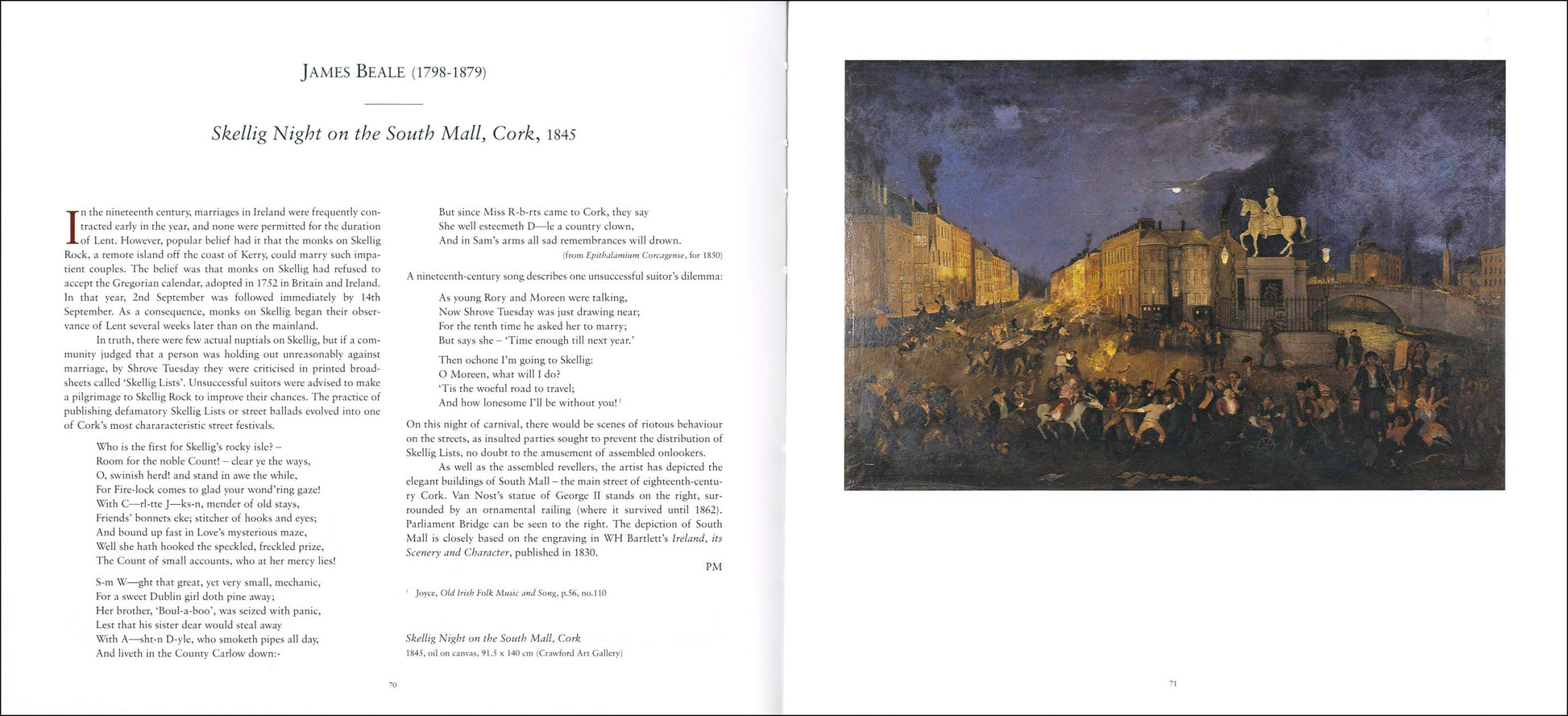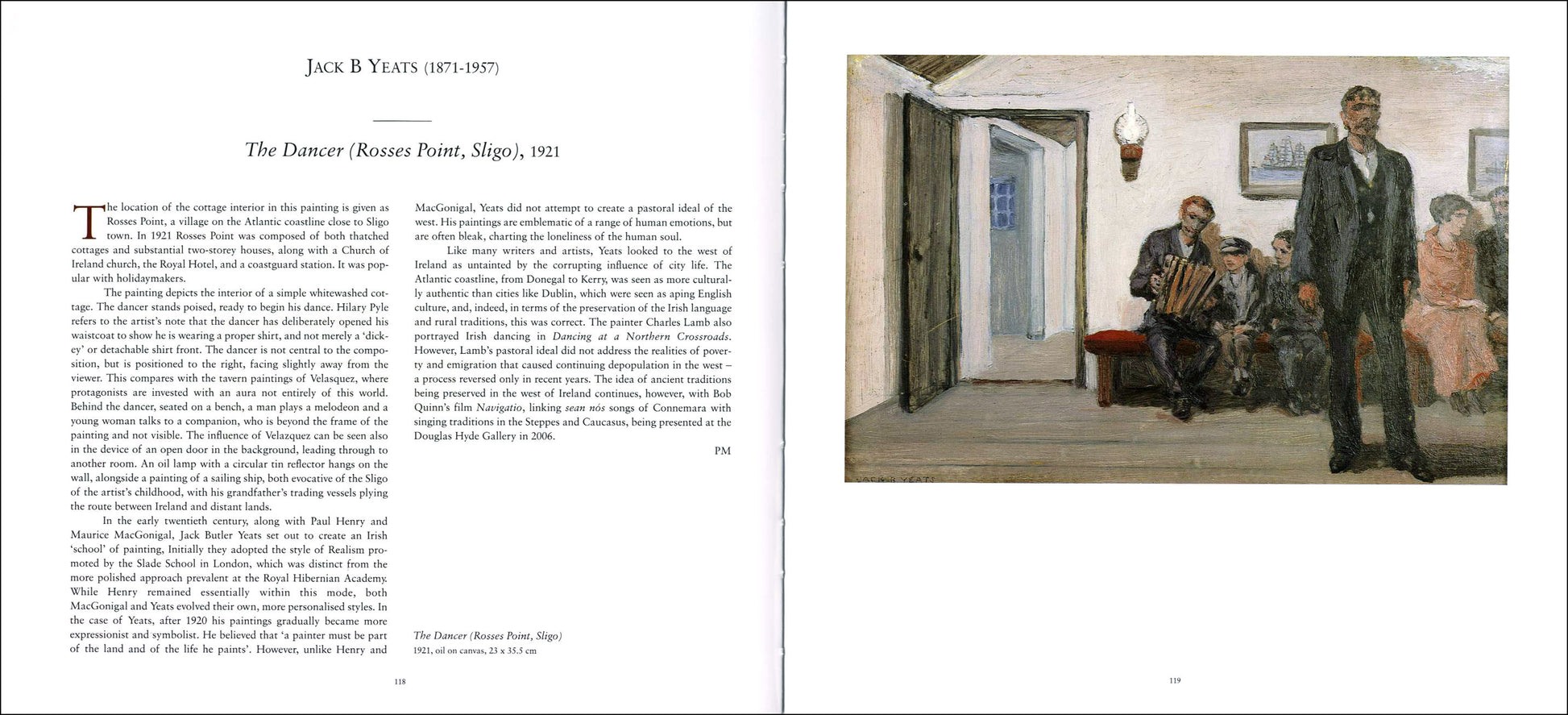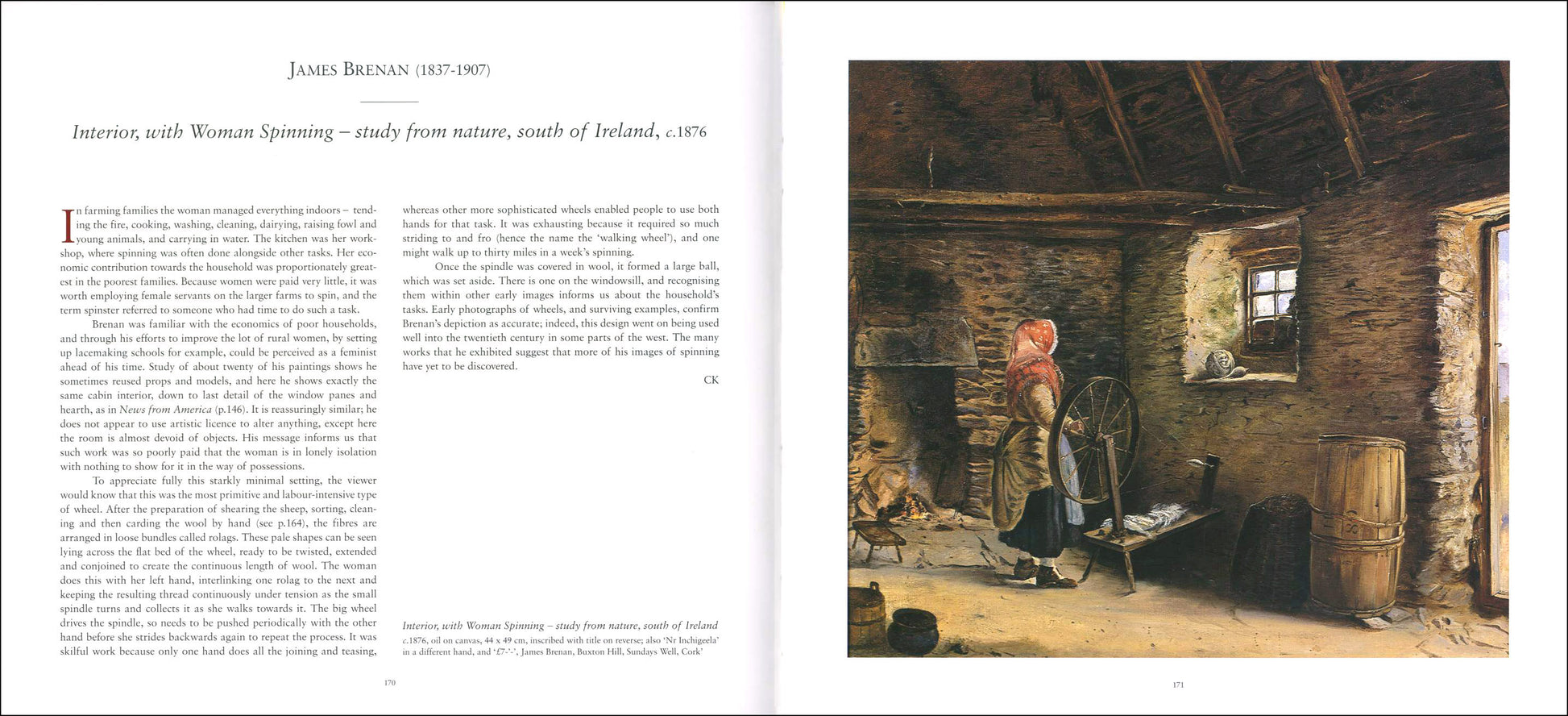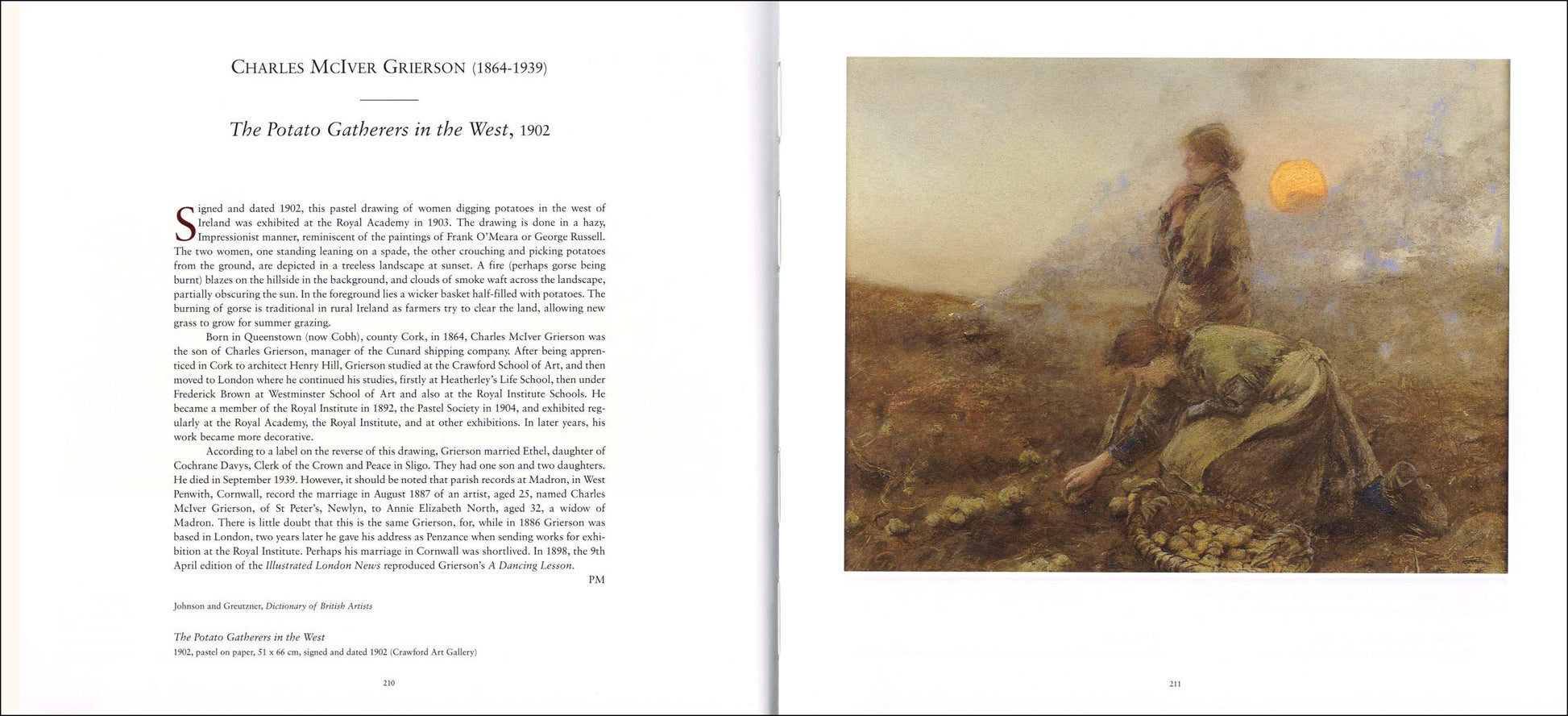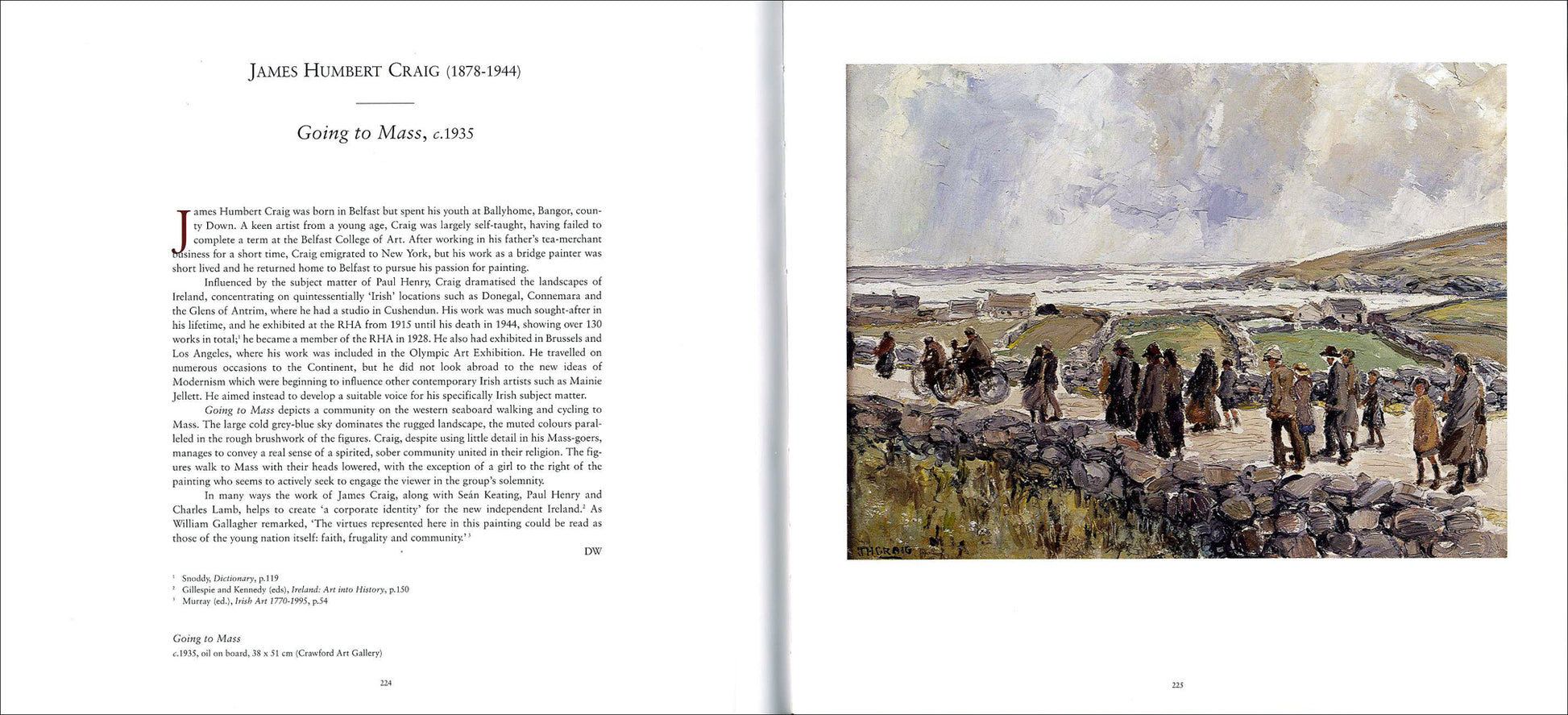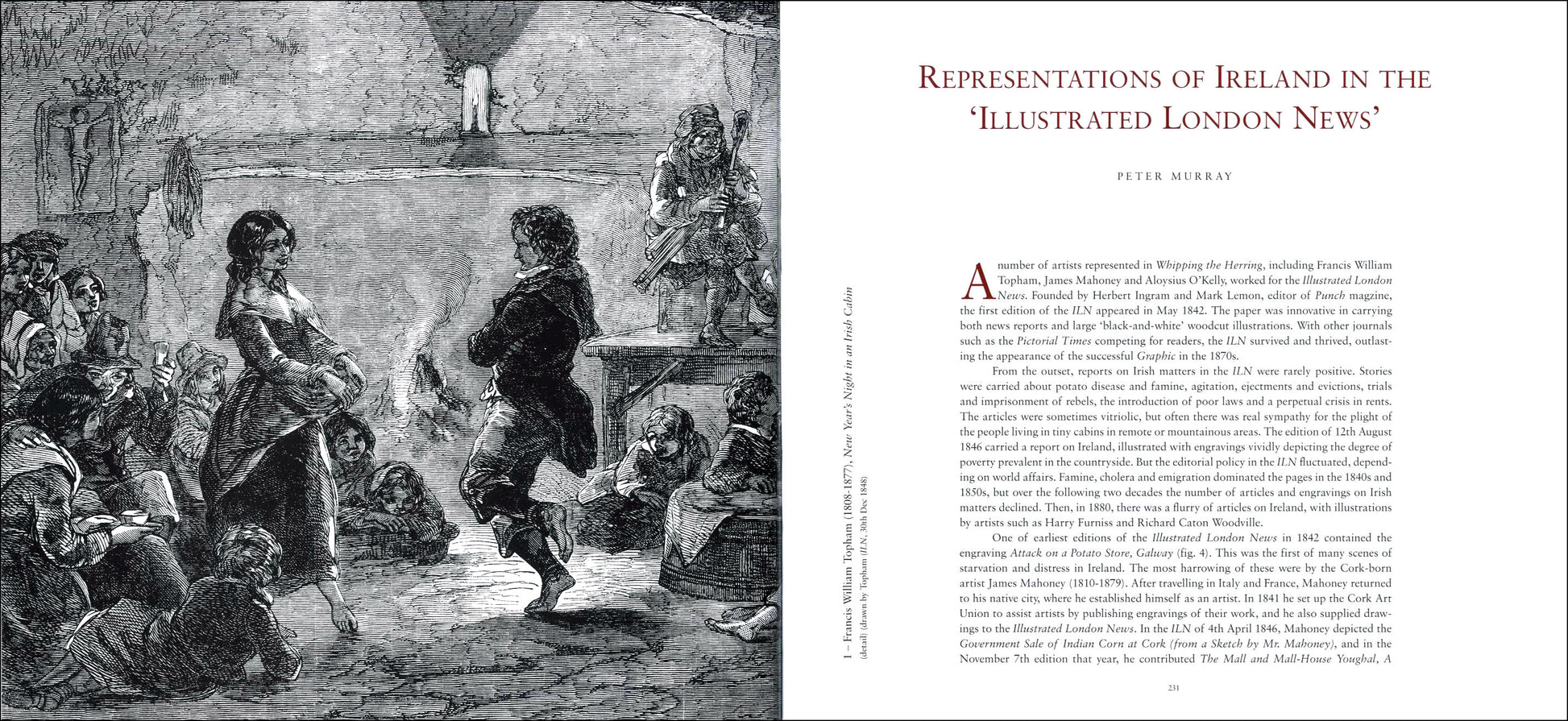Crawford / Gandon
WHIPPING THE HERRING — Survival and Celebration in Ninetenth-Century Irish Art
WHIPPING THE HERRING — Survival and Celebration in Ninetenth-Century Irish Art
Couldn't load pickup availability
Share
ed. Peter Murray
essays by Julian Campbell, Tom Dunne, Claudia Kinmonth, Peter Murray
ISBN 978 0948037 313 264 pages (hardback) 22.5x24.5cm 204 illus index
Whipping the Herring provides a fascinating visual record of everyday life in the towns, villages and countryside of Ireland two centuries ago. Featuring four superb, insightful essays, there are numerous images of fairs and festivals, pubs and pilgrimages, marriages and wakes. There is a particular emphasis on the lives of ordinary people, struggling to make do – and often enjoying life – on very limited means. There are scenes, too, of relative prosperity, for Ireland had periods of economic growth in the nineteenth century. Seventy key works are featured, each of which is accompanied by an individual text on the work and its artist.
EXTRACTS
"The Classical and Neo-Classical casts may have had a salutary effect on students at the School of Art, but there is also a strong tendency towards Realism evident in Cork art throughout the nineteenth century. A port city, its wealth based on mercantile attributes of measurement and quantification, like Belfast, Limerick and Waterford, Cork was well placed to become the regional centre for a Realist art movement. Although the houses of the merchants and bishops in the eighteenth century were embellished with Rococo plasterwork, by the early nineteenth century there was less taste for the fanciful; instead paintings describing people and the world in down-to-earth terms became valued. Nathaniel Grogan’s and Daniel MacDonald’s best paintings show street traders mixing cheerfully with wealthy merchants. Davis might have added to his list of émigré Irish artists William Turner de Lond, who depicted similar cheerful social confusion in Ennis and Limerick.
By contrast, in Dublin, with its Castle ‘court’, a refined landscape and pastel portrait tradition at the Drawing Schools, and a nervous anxiety at the Academy to live up to its royal charter, patronage tended to follow a diluted English taste. There was an aspiration towards grandeur and the heroic, while the Academy laid down strict definitions on what artists might paint. Middle-class art collectors opted frequently for coy and sentimental scenes. On the other hand, the regional port cities, broadly speaking, lacked a substantial middle-class audience and this inhibited the growth of an art market based on qualities of sentimental appeal. The fact that the majority of artists in Whipping the Herring are from Munster perhaps reflects a more laissez-faire cultural approach in a city that cared less for titles and status than making money supplying the world with firkins of beef and salted butter. Like Belfast, Cork’s status as a port city created an atmosphere less conducive to sentimental art than Dublin, which preferred an escapist art that glossed over social problems. The Realism that flourished in Munster saw artists such as Robert Lowe Stopford, James Mahoney and James Brenan producing works of reportage and social commentary. Later in the nineteenth century, when the west of Ireland became popular as a destination for artists, artists tended to portray its heroic or picturesque qualities. Theirs remained essentially an outsider’s view. In Cork, a small self-contained city, the artists were insiders, casting a quizzical and occasionally satiric eye over those they knew well."
— from the essay by Peter Murray
"Irish interior scenes of the early nineteenth century derive from contrasting traditions – classic Dutch interiors of the seventeenth century, the genre subjects of William Mulready and David Wilkie, and the pretty cottage scenes popular in the Victorian period. In England, the novelist George Eliot criticised the ‘softening influence of the fine arts which makes other people’s hardships picturesque’. However, paintings by Brownlow hauntingly echo the peasant interiors of the Le Nain brothers in seventeenth-century France. In the second half of the century, French Realist painters such as François Bonvin and Leon Lhermitte, and Josef Israels in Holland, introduced greater naturalism and pathos into the interior genre. Honoré Daumier’s wash painting La Soupe (1852, Louvre) shows a ragged working-class family ravenously eating their soup at the kitchen table while the mother breastfeeds her baby, while Van Gogh’s Potato Eaters (1885, van Gogh Museum, Amsterdam) shows a Dutch peasant family crowding around the small table in their dingy cabin.
Irish artists never reached this degree of social realism. Yet Aloysius O’Kelly’s Connemara interiors are striking in their tangible realism and the cleanliness of the cottages and their inhabitants. There are several unexpected features in representations of some west of Ireland interiors which contradict the stereotype of cramped two-roomed cabins often described by writers. The first is the spaciousness of rooms, with lofty ceilings, in paintings by Burton and O’Kelly. Moreover, in comparison with Wilkie’s untidy and ambiguous caverns, O’Kelly’s interiors have a well-swept, cared-for quality. The hearth, being a central feature in some pictures, brings a warmth and homeliness to a sparse scene. Also, in comparison with the cottage interiors of James Brenan in county Cork, and similar subjects by Continental artists, where the table is placed in the centre of the room, the kitchen table (if present at all) is placed against the wall in some west of Ireland pictures. This may have been to allow more space in a small room for storytelling, music or weaving, or for sitting around the hearth. Or the table may have been pushed back to allow the artist to include more details of the room."
— from the essay by Julian Campbell
|
CONTENTS Foreword John O’Donoghue TD 7 Realism versus Romanticism in framing National Identity Peter Murray 10-23 The representation of everyday life in Irish Painting of the 19th Century: the European context Julian Campbell 233 Rural Life through Artists’ Eyes: an interdisciplinary approach Claudia Kinmonth 34-45 The Dark Side of the Irish Landscape: depictions of the rural poor, 1760-1850 Tom Dunne 46-61 COLOUR PLATESThematic Listing of Works 62-67 1 – Festivals, Fairs and Pilgrimages 68-81 2 – Social Occasions 82-121 3 – Famine and Emigration, Rents and Evictions 122-137 4 – Education and Improvement 138-147 5 – Funerals and Weddings 148-163 6 – Working Life 164-227 Representations of Ireland in the Illustrated London News Peter Murray 230-257 all 70 key works are accompanied by an individual text on the work and its artist 1 – Festivals, Fairs and Pilgrimages Nathaniel Grogan (1740-1807), Whipping the Herring Out of Town, c.1800James Beale (1798-1879), Skellig Night on the South Mall, Cork, 1845 Daniel Maclise (1806-1870), Snap-Apple Night, n.d. Maria Spilsbury Taylor (1776-1820), Pattern at Glendalough, c.1816 Daniel MacDonald (1821-1853), Sidhe Gaoithe / The Fairy Blast, c.1841 George Petrie (1790-1866), The Last Circuit of Pilgrims at Clonmacnoise, c.1828 2 – Social Occasions William Brocas (1794-1868) [attrib.] Donnybrook Fair, n.d.Nathaniel Grogan (1740-1807) The Potato Market, c.1800 3 – Famine and Emigration, Rents and Evictions Daniel MacDonald (1821-1853), The Discovery of the Potato Blight in Ireland, c.1847GMW Atkinson (1806-1884), Emigrants at Cork, c.1840, c.1840 Robert Richard Scanlon (fl.1832-1876), Emigrants Awaiting Embarkation, West Cork, 1852 Charles Henry Cook (c.1830-c.1906), Awaiting the Emigrant Ship, 1867 David Frederick Markham (1800-1853), Collecting the Rent at Manor Hamilton, c.1847 Alfred Concanen (1835-1886), The Rent Collector, c.1870 Daniel MacDonald (1821-1853) [attrib.], The Eviction, c.1850 Henry Jones Thaddeus (1859-1929), An Irish Eviction, county Galway, Ireland, 1889 4 – Education and Improvement Anonymous (‘Schools Sketchbook’), Ballinaboy School near the Monastry 19th Augt 1850, 1850Nathaniel Grogan (1740-1807), The Bantry Pact (or The Bantry Bard), c.1783 John Boyne (c.1750-1810), The County Chronicle,1809 Howard Helmick (1845-1907), News of the Land League, 1891 James Brenan (1837-1907), News from America, 1875 5 – Funerals and Weddings Aloysius O’Kelly (1853-c.1941), Mass in a Connemara Cabin, 1883 6 – Working Life William Hincks (fl.1773-1797), ‘Spinning, Reeling with the Clock Reel and Boiling the Yarn’, 1783Cornelius Varley (1781-1873), Woman Spinning in a Doorway, c.1808 George Washington Brownlow (1835-1876), A Spinning Lesson, 1874 James Brenan (1837-1907), Interior, with Woman Spinning – study from nature, south of Ireland, c.1876 James Brenan (1837-1907), Patchwork, c.1892 James Brenan (1837-1907), A Committee of Inspection (weaving, county Cork), 1877 John George Mulvany (1766-1838), Return from the Fair, 1828 Frederick Goodall (1822-1904), Irish Cabin Interior, c.1840s Alfred Downing Fripp rws (1822-1895), In a Fisherman’s Hut, 1844 Francis William Topham rws (1808-1877), Cottage Interior, Claddagh, Galway, 1845 Revd John Rooney [alias ‘Joannes Clericus’] (c.1809-1850), Sympathy, 1847 Robert Richard Scanlon (fl.1832-1876), Drogheda to Dundalk, c.1850 Stephen O’Driscoll (c.1825-1895) [attrib.], The Postwoman, c.1860 Sir Martin Archer Shee(1769-1850), The Postman, c.1830 James Brenan (1837-1907), Like Father, Like Son, 1886 Howard Helmick (1845-1907), The Dispensary Doctor, West of Ireland, 1883 Edward Sheil (c.1834-1869), Home After Work, 1863 Aloysius O’Kelly (1853-c.1941), Feeding Hens, West of Ireland (or The Return of the Fisherman) c.1879 Erskine Nicol (1825-1904), Bliss, condition, circumstance is not the thing bliss is the same in subject or in king, 1863 William Magrath (1838-1918), A Son of the Soil, c.1879 Hugh Charde (1858-1946), Market Woman, 1886 Sarah Henrietta Purser (1848-1943), The Cooper’s Shop, James’s Gate Brewery, c.1887 Henry Allan (1865-1912), The Rag Pickers, 1900 Charles McIver Grierson (1864-1939), The Potato Gatherers in the West, 1902 James Arthur O’Connor (c.1792-1841), The Poachers, 1835 Samuel Lover (1797-1868), The Kelp Gatherers, 1835 William Magrath (1838-1918), The Seaweed Girl, 1877 Aloysius O’Kelly (1853-c.1941), Seaweed Gatherers, Connemara, c.1883 William Henry Bartlett (1858-1932), The End of the Fair, Back to the Island, 1910 Paul Henry (1871-1957), Launching the Currach, 1910-11 James Humbert Craig (1878-1944), Going to Mass, c.1935 Walter Osborne (1859-1903), The Horse Fair, Galway, 1893 |
|
Sometimes packed with people, colour and event, sometimes spare, sometimes so honest in their depiction of the hard-working poor as to be painful, the pictures also have a strong narrative sweep, dense with conviction and detail. — Mary Leland, Irish Times This is a magnificent and excellent study. — Books Ireland |
